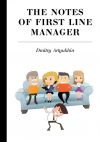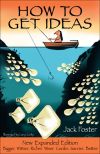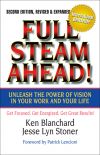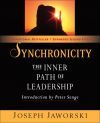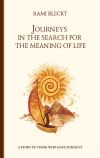Правообладателям!
Представленный фрагмент книги размещен по согласованию с распространителем легального контента ООО "ЛитРес" (не более 20% исходного текста). Если вы считаете, что размещение материала нарушает ваши или чьи-либо права, то сообщите нам об этом.Читателям!
Оплатили, но не знаете что делать дальше?
Текст бизнес-книги "It’s A Miracle: Real Life Inspirational Stories, Extraordinary Events and Everyday Wonders"
Автор книги: Richard Thomas
Раздел: Жанр неизвестен
Текущая страница: 2 (всего у книги 5 страниц)
ACTING UPON FATE
From the time she was a young girl growing up in Oklahoma, Cyndi Steele was stagestruck. But it wasn’t only the lights and costumes that fascinated her. She had a mad crush on one of the local actors, nineteen-year-old Chris Harrod.
“She was always there,” recalls Chris. “She had these little glasses on and little braces. She was just, really cute, and I remember thinking, What a cute kid.”
In 1992, Cyndi left Oklahoma for New York City to pursue her dream of acting, and it paid off when she landed a role in a stage production of Bye Bye Birdie.
“It was kinda cool to get a chorus thing right off,” Cyndi says. “’Cause I didn’t do that kinda work. And I thought, All I can do is get older and do the character roles, so this was great.”
But during a preview performance, a freak accident changed all her plans.
“We were just standing in the wings,” recounts Cyndi, “waiting to go on for bows, and a friend in the show just flips his head back, and it just knocked me right above my right eye. Instead of falling body first, I fell head first. The back of my head stopped my fall.”
Cyndi was knocked unconscious. None of the actors could revive her. When she finally regained consciousness, she was in a hospital.
Cyndi says, “A nurse came up to me, and she said that I had fallen and hit my head. And I said, ‘Where?’ She said, ‘At work. You were doing a show.’ And she said, ‘Your friends are out there.’ She opened the door, and they’re just waving at me enthusiastically … and I have no idea who they are.
“So I came back from the hospital,” Cyndi continues. “I saw there were photos of my family, and I didn’t know exactly who everybody was…. I knew my name was Cyndi Steele, but that didn’t make any sense to me. Nothing made any sense.”
Cyndi was suffering from severe amnesia brought on by blunt head trauma and a concussion. Unable to remember the simplest things, she began staying at home, alone, isolated from an unfamiliar world.
“I found some journals, and I thought they would help me piece things together. They were disjointed, but it helped. There were still so many gaps,” Cyndi explains. “And I didn’t want to meet people. It was too frustrating.”
A worried friend finally convinced Cyndi to join her for a night out. As they sat watching a movie, Cyndi noticed that something about the man sitting next to her seemed familiar.
“And I just kinda looked at him,” remembers Cyndi, “and I said, ‘Did I know you before?’ And he was like, ‘Yeah, I’m Chris Harrod.’”
“We were watching the movie, having a great time,” Chris adds, “and the whole time, I’m thinking, This is strange…. I’m starting to be attracted to somebody who I’ve known since they were twelve. Who doesn’t remember who I am. This is really weird.”
A few days later, Chris spent an evening with Cyndi talking about his acting career and how it had brought him to New York. But he didn’t bring up the past. As far as Cyndi knew, she was meeting him for the first time. Chris was very moved by how hard she tried to act like nothing was wrong.
“Now, I just thought that she was really brave and strong, and I thought, I’m gonna sit here as long as she’ll let me. And then we were just together, we were inseparable,” says Chris.
A few weeks later, Cyndi returned to Oklahoma, hoping her parents could help fill in the gaps in her life.
“And I said, ‘I’m seeing this guy. His name is Chris Harrod,’” recalls Cyndi. “And they just about choked, because the psychiatrist told them, ‘Don’t bring up her past. Just be open to what she’s doing—as hard as that will be for you.’”
And so Cyndi’s parents kept quiet. Then one afternoon, while paging through a scrapbook, she found pictures of the man she’d left behind in New York.
“The more I dig, I find picture after picture of Chris,” exclaims Cyndi. “Cutouts with ‘I love you’ or ‘You’re so cute’ written on them. And I’m just laughing, and when I open the door, my parents are laughing, ’cause they were dying to tell me this forever.”
They told her how she used to hang around the community theater, watching her dad perform … and always hoping to get a glimpse of Chris. The story jogged her memory, and suddenly she remembered how she’d once told her parents that, one day, she would marry Chris Harrod.
“It was just like something clicked. I just went to the phone and called him, and I was like, ‘I was totally in love with you,’” Cyndi recounts.
Chris adds, “And I thought, This is fate. This is what it is, this is fate. I mean, you don’t just meet somebody and then have this happen and not automatically think that there’s something special going on here.”
Chris’s prediction came true on December 22, 1995. And today, the happy couple has added another little miracle to their life: their son, Dalton. Even though Cyndi has recovered only thirty percent of her long-term memory, she believes that she has enough good memories to last her a lifetime.
“The few I have,” confirms Cyndi, “I’ll treasure them. I wouldn’t change it. Something good came out of that accident.”
MIRACLE REUNION
When Elsa Amador was twelve years old and living in Puerto Rico, she met a young boy who was the son of Roberto Clemente, the legendary baseball player who had been tragically killed in a plane crash. Elsa and Roberto junior instantly felt a strong attraction to each other.
“We told each other we loved each other every day…. I mean, every day, like twenty-five times a day,” says Elsa.
In spite of their tender age, Roberto and Elsa believed they would spend their lives together. But a tragic event tore them apart. Elsa’s father was the innocent victim of a botched robbery attempt. And now, his family was in extreme danger.
Elsa’s mother had identified the man who killed her husband and was receiving death threats. The FBI moved in to take control of the situation. Elsa had only enough time to briefly call Roberto before she and her family were rushed out of the country, into the Witness Protection Program.
“I explained to him that we had to leave,” Elsa recounts. “Unfortunately, I couldn’t tell him where we were going. I just kept telling him how much I cared for him and not to blame me for what I was going to do…. It was out of my control.”
Elsa spent the next few years moving around the United States. But she never forgot her childhood sweetheart.
“I thought about him all the time,” Elsa admits. “I would sometimes close my eyes and see an image of him. He was really thin and tall and just smiling all the time. As time went on, I sort of assumed he had his own life. I just imagined him settled and married….”
In November of 1996, Elsa’s mother was diagnosed with terminal cancer. She had always felt responsible for separating her daughter from her childhood sweetheart. On her deathbed in the hospital, she made a startling request, urging Elsa to find her lost love.
“Find Roberto,” Elsa’s mother told her. “He’s the man for you.”
“So I asked, ‘How am I going to find him?’ And she said, ‘You should find him.’ And so I kind of brushed it off,” says Elsa.
And then, a few months after her mother’s death, Elsa had a sudden, unexplainable urge to attend a Yankees baseball game.
“It was as if something was just pushing me,” describes Elsa.
Whatever was pushing Elsa to the stadium, got her there an hour early that day—just in time for a pre-game event. The Yankees were celebrating Hispanic Heritage Day, and there in center field, accepting an award for his father, was Elsa’s long lost love—Roberto Clemente, Jr.
“It was really strange,” Elsa recalls with wonder. “I thought, What is he doing there? I haven’t seen him for all of these years and all of a sudden I see him at the park.”
After the ceremony, Roberto disappeared from the field. Elsa spent the next nine innings of the game desperately trying to locate him, but without success. The boy she had never forgotten … the man her mother begged her to find … was closer than he’d ever been in over fifteen years, and still he was out of reach. Finally, a security guard gave her a possible lead, the phone number of a local sports cafe. Elsa called and left a message, and the next day Roberto returned the call and arranged to meet again the woman he had been separated from so many years ago.
“I felt like I had just seen her yesterday,” declares Roberto. “Like I had just been with her in school the day before. And the feelings that I had for Elsa were so strong. My friends, everybody, knew about Elsa. It was something that I just … I kept her alive in my heart.”
On Valentine’s Day, 1998, Roberto and Elsa made their reunion complete when they married in New York City. Today, they still marvel over how powers far beyond their own made the dying wish of Elsa’s mother come true.
“I truly believe that our parents had a meeting in heaven and said, ‘Wait a second … let’s do something here,’” Roberto says. “I believe that it was meant to be, and I truly believe that it was a time where our parents’ souls got together and said, ‘Let’s just make our two children happy.’”
For Roberto and Elsa, a tragic separation has ended happily with a miraculous second chance.
THE SPIRIT OF STRENGTH
JUMPING LIFE’S HURDLES
As a collegiate athlete, John Register was at the top of his form. He ran on four championship teams at the University of Arkansas and held three all-American titles in track-and-field.
“I had a great year in 1987, but in 1988 I really put my athletic career on hold to get my degree and get out of school. So my track-and-field career suffered a little bit during that time.”
After graduation, John married his childhood sweetheart, Alice Johnson, and they soon became the proud parents of a son, John Register, Jr. But it was the dream of Olympic gold that led John to the U.S. Army and their world-class athlete training program. His road to the Olympics, however, would soon take an unexpected detour.
“I got called up to serve in the Gulf War. And so I went and served with the 5th and 27th Field Artillery in Operation Desert Storm.”
Seven months later, John returned from the war and resumed his quest for the Olympic gold. But with only limited training time available, he failed to make the 1992 team.
“I wasn’t dejected by that at all, and I started calculating almost immediately. I said, If I can just improve three places each year, I can be on that team in 1996.”
So he intensified his training, and his performance steadily improved. It seemed his dream would become a reality … until the end of one fateful training session.
“I decided to take one more pass down the track before shutting it down. I was just too tired to save my energy for the next day.”
He cleared each of the hurdles with room to spare, until suddenly he fell short.
“I knew it was going to be difficult to make the thirteen steps for the next hurdle, but I got across it, and when I landed my leg popped out of the socket. I saw that my left leg was crossed over my right leg with my foot pointing back toward my face. And I just turned away from it. I couldn’t look at it anymore. Then the pain hit. It was tremendous. I felt like the whole leg was just on fire, was just exploding.”
John was taken to the Wesley Medical Center in Wichita, Kansas. Alice and John junior rushed to his side.
Alice remembers, “When I walked in I didn’t see my husband. I saw a man, but he didn’t look like John.… It was as if every muscle from head to toe were hurting.”
Doctors discovered that John’s popliteal artery had been severed, preventing blood from circulating to his lower leg. Gangrene had set in, forcing them to remove the infected muscle tissue from his calf, but John’s prognosis was bleak.
Alice says, “The doctor said, ‘You can keep your leg and you will walk with severe pain and a limp for the rest of your life, or we can amputate your leg and you can rebuild your life. It’s not a decision I need right now, but we’re gonna need it soon.’”
John says, “I knew that it had to come off. I just knew that it had to be done. The answer was clear. Let’s get rid of the pain, and then we can deal with the other stuff later. I could not see myself living with either a wheelchair or a walker and being in pain. Especially the pain that I was feeling at that point in my life.”
Once again John was taken into surgery, this time to amputate his leg above the knee.
“About three days after the amputation,” Alice remembers, “I asked him if he was strong enough to get up and if he would like to go outside.”
“I said, ‘Well, just park the wheelchair right here and I’ll just watch you all playing on the swings,’” says John. “And when I saw that I could not get out of that chair and go over with John junior to the swing and the slide, I actually understood what it meant to be different—to be a changed individual. And I think that’s when the limitations started piling on me. I think I started to realize that I wasn’t going to the Olympic trials. This dream was over for me. I would never run again.”
“I heard John just crying,” remembers Alice. “Just crying. So I walked back over and John junior walked over and we just hugged him. And I think at that moment John really realized that his leg was gone.”
Having accepted his loss, John focused on rebuilding his life, attacking his therapy with the same dedication that had made him a world-class athlete.
John says, “In my mind, I was ready to start the recovery process. And I didn’t really know what to expect at that point. But I knew that whatever I had to do, I had to get strong again.”
Determined to strengthen his body, John began swimming. His competitive instincts soon took over. One year after his accident, John made the U.S. swim team and competed in the 1996 Paralympic Games in Atlanta.
John remembers, “That’s where I think the idea was sparked in my head to come back to the sport of my first love, track-and-field.”
John immediately started training to run in the 2000 Sydney Paralympic Games. His results, however, were not encouraging.
“I’d go out there and strap the leg on and run down the track. I was trying to get the rhythm and it just wasn’t coming.”
Alice remembers, “After a run, the skin would be gone on the inner part of his leg. And he would have large sores on it.”
John says, “And I said, ‘Well, maybe I can’t do this.’ The doubt started creeping in.”
But Alice and John made a pact that would help John get back out on the track.
Alice says, “I was learning to rollerblade and I had severely twisted my ankle. And I said, ‘I’m not getting back on another rollerblade.’”
Alice agreed to try rollerblading again if John would try running 100 meters.
John remembers, “She used the rollerblades to show me that if she could go back to it even though she was so scared of them, then I could get up there and get on my leg and run again as well.”
Alice says, “So we did it together. I rollerbladed the 100 and he ran for 100. And at that point I was excited. I could see his joy in it again.”
A few days later, John ran his first competitive race since losing his leg.
“It was the scariest thing I had ever done. I mean, I had no control. I saw the backs of almost every athlete out-there. And I was just fighting to stay upright, to stay balanced and not to fall, but at the same time, when I crossed that line I said to myself, You know, you just did it. You just ran against the best of the world here.”
Two weeks later, John qualified for the Disabled World Championships in the 100 meters and the long jump. Still, he knew he could do better.
“The leg was whipping around and it was not working with my body. I was actually fighting it. When I ran, I was landing on the top portion of the leg. And that was cutting into the inside groin area. So every time I landed, the pain was so bad that I felt like I was on fire.”
But someone was watching who would change John’s life forever: a prosthetic designer named Tom Guth.
Tom says, “His speed was incredible, fantastic, but his leg was just whipping to the side and going in all directions. And I thought, What a shame. This man has so much power, so much speed. If we could straighten his leg out and get him a good fit, he could probably be a gold medal winner.”
Using advanced technology at the RGP Prosthetic Research Center in San Diego, Tom designed a new state-of-the-art running-and-jumping prosthetic for John.
“The results were just phenomenal,” John remembers. “Two seconds had just come off of my time. And I felt my body come back to me again. It was an incredible feeling and I knew I was going to make the U.S. team for the Paralympic Games, so I could compete in Sydney, Australia.”
The first step was the qualifying trials.
John says, “I saw myself on that runway and the competitive spirit just came back. I thought, You know what to do, you’ve been in this position many times before, and you can do it.”
And he did.
John’s Olympic dreams had come true. In spite of all the suffering and hardship, he was competing once again.
“It was a dream come true,” John says. “And even though I’m not on the track as an able-bodied athlete, having the experience of playing at the Games is better. It’s been really fantastic to understand that you can push your body to another level.”
John posted a personal best in every event he competed in, winning a silver medal in the long jump and placing fifth in the 100– and 200-meter races.
Alice reflects, “I think what people can learn from John’s journey is that there is nothing that you can’t do. If you have determination, you can succeed at whatever you put your mind to.”
A FATHER’S JOURNEY
Ever since he was a young boy, Ron Greenfield dreamed of flying.
“My mom told me that from the time I could walk and talk, all I ever talked about was becoming a pilot,” says Ron.
Ron’s love of aeronautics grew stronger over the years. But it wasn’t until he was seventeen that his dream finally came true.
It was 1968, and the Vietnam War was in full swing. Ron enlisted, went through flight school, and began piloting the new Cobra Attack helicopter over the jungles of Vietnam.
“I was flying what we called mortar patrol,” explains Ron. “Mortar patrol is where we keep aircraft up all the time, waiting for either the North Vietnamese Army or the Vietcong to make mortar attacks on the U.S. troops. Once they’d fire the mortar, you could pinpoint it. And then you could quickly roll in, and fire rockets on that spot.”
On March 5, 1969, Ron was on a reconnaissance mission when his Cobra was hit by enemy gunfire. The helicopter was badly damaged, and began a steep dive into the jungle below.
“Apparently they hit my flight controls, because I couldn’t pull out of the dive,” says Ron. “We probably hit the trees at 200 or 250 miles an hour.”
“It looked like the jungle just opened up, we went into it, and it closed up,” remarks Ron. “You couldn’t even tell where we went in.”
The Cobra literally came apart in the crash, with only the cockpit remaining intact. Badly injured and bleeding, Ron managed to crawl out of the aircraft, but the excruciating pain made it impossible for him to move any farther. Ultimately, he passed out.
Moments later, Ron’s copilot, Terry McDonald, regained consciousness. Dazed and disoriented, Terry staggered toward a clearing in the trees to try to get his bearings. What happened next was a soldier’s worst night-mare—the enemy lay in wait, and Terry was captured. Tragically, he would never be heard from again.
Back at the wreckage, however, Ron remained unconscious. In their haste, the enemy soldiers mistakenly left him for dead.
When he finally awoke, hours later, Ron was confused and unsure of where he was. “You know how in the movies, they say, ‘Where am I?’ That’s just how it was.” Slowly, he discovered the extent of his injuries. “My flight helmet was shattered, which means I hit my head pretty hard,” he comments, “and I felt a real sharp pain in my left leg. I looked down, and the foot was laying flat, even though my leg was straight. When I moved it, the foot flopped all the way over. I could see that half of my boot was gone, that I was bleeding quite a bit. I knew I had to stop this bleeding or I was going to die.”
Weak, immobile, and losing more and more blood, Ron knew that it was only a matter of time before he would die or the enemy would return. Summoning up his remaining strength, Ron recalls, “I crawled over to some trees not far from the wreckage. And I put both legs up in the air, against the tree. And that’s how I spent the night.”
“When I awoke, it was morning. It had been raining, and I remember trying to catch some raindrops with my mouth, ’cause I was thirsty,” says Ron. “I began trying to think about how I was gonna get out of there.”
The situation seemed hopeless. Three search-and-rescue missions for the two missing pilots had already failed. One helicopter had been shot down, killing three soldiers. A second was badly damaged, and a third was ambushed when it landed.
Unable to walk, Ron had no choice but to wait and pray. He desperately needed a miracle. A few hours later, his prayers were answered when a fourth army helicopter finally spotted him.
“The door gunner had seen a piece of wreckage, and that’s what made them turn around,” explains Ron. “They sent a medic down on a cable. He hooked me up to a harness, and they hauled me out of there.”
The next thing Ron knew, he was waking up in a MASH-unit field hospital. But his ordeal was far from over.
“It was three days before I gained consciousness. And they did emergency surgery on me.” Doctors did their best to try and save Ron’s leg, but as he tells it, “They told me later they didn’t know if I was gonna make it.”
Ron was shipped to Japan, where doctors performed additional surgery. But the prognosis wasn’t good. Upon his return to the States, Ron would face amputation below the knee.
“I had not realized how seriously I was injured,” reveals Ron. “I saw my flying career going away.”
When Ron was finally returned home, his doctors felt they could save his leg. But it wouldn’t come without a price—the damaged limb had contracted an incurable bone infection, which gave Ron constant pain, and which got progressively worse. “A lot of time was spent on crutches,” Ron says.
Four years and sixteen painful surgeries later, Ron had had enough. He was transferred to a military hospital in Denver, Colorado, where, two days later, his foot and lower calf were amputated. The results were immediate and miraculous.
“By 10:00 A.M. I wanted to get out of bed. And they said, ‘No, you gotta stay in bed, nobody gets out of bed after an amputation.’ I said, ‘I feel fine.’ The next day I was out of my bed and walking on crutches around the hospital, with absolutely no pain. It was like this huge burden had been lifted,” recalls Ron.
Ron’s convalescence was amazing. He was fitted with an artificial limb and, as always, he was determined to defy the odds.
“They’d always have to chase me out of therapy,” Ron remembers. “I’d get down there and I would spend hours. I was determined I was gonna be a good walker.”
Ron became more than just a good walker, however. Soon, he was playing baseball, learning to ski, and running 10K races.
“The attitude I developed,” he says, “was that the artificial leg was now a part of me.”
Eventually, Ron also came to terms with the fact that his flying career was over. But he was still struggling with one unanswered question.
“I was always asking God, you know, ‘Why me? Why did you take my leg?’”
Then in 1992, while on a business trip, Ron came across a newspaper article that helped answer that question. The article described three-year-old Russian twins who’d been born with gangrene in their legs. Both boys had been turned over to an orphanage at infancy—after their legs had been amputated.
“It struck me,” Ron says, “that with all I’d been through over the past couple of decades, I could do something for these two kids that somebody with two good legs couldn’t, because I know what they can do and what they can’t do.
“I got on the phone to my wife and I pleaded with her that we should adopt these kids,” recalls Ron. Next, he contacted the Cradle of Hope, an adoption agency in Washington, D.C., and convinced them that they needed to look no further to place the Russian twins.
“I told everyone that even if it takes more medical care than I thought or if it takes more mental care than I thought, I was gonna bring these boys back and give them an opportunity,” declared Ron.
That August, Ron and his wife boarded a plane to Moscow to bring the boys home.
“I went to the orphanage there to see them,” remembers Ron, “and they were sitting in a double stroller. And the only way to describe it is that they were even more beautiful than even I expected.
“On the plane back, I looked down at these two little guys as they were sleeping, and it just hit me like a lightning bolt, you know … that that’s the purpose. That’s the purpose that God had. That’s why I lost my leg,” says Ron. “Because if I hadn’t, I probably wouldn’t have pursued those two little boys. They wouldn’t have jumped out at me like they did.”
Ron finally felt that he’d found a reason for all of his suffering. He knew that through his own experience, he could give his sons the confidence to rise above their disabilities.
“They tell me often that they wish they could have real legs,” Ron admits. “And when they tell me that, I tell them, well, you know, we’re dealt with what we’re dealt with, and we just have to make the most of it.”
Today the boys, Max and Andy, are fourteen, and they both realize what a special gift their father has given them.
Says Andy, “Dad adopted us because he felt like he can help us. Because, if you have problems, he’ll know what to do.”
“My dad’s my favorite person in the world because he has an artificial leg like I do, and he loves me a lot,” adds Max.
That love has made it possible for Max and Andy Greenfield to have the advantage of a full and active life.
“It doesn’t keep me from doing what I want to do,” says Andy. “I can ride my skateboard, or bike, and sometimes I ride my rollerblades. And I go swimming.”
As Ron looks back on his experience, he is awed by the miracles that have touched his life.
“It’s been a multitude of miracles,” he says. “Surviving the crash, surviving the Vietnamese, and then, I think the final miracle is Andy and Max.
“God put me in the right place at the right time to do another miracle.”
Правообладателям!
Представленный фрагмент книги размещен по согласованию с распространителем легального контента ООО "ЛитРес" (не более 20% исходного текста). Если вы считаете, что размещение материала нарушает ваши или чьи-либо права, то сообщите нам об этом.Читателям!
Оплатили, но не знаете что делать дальше?


